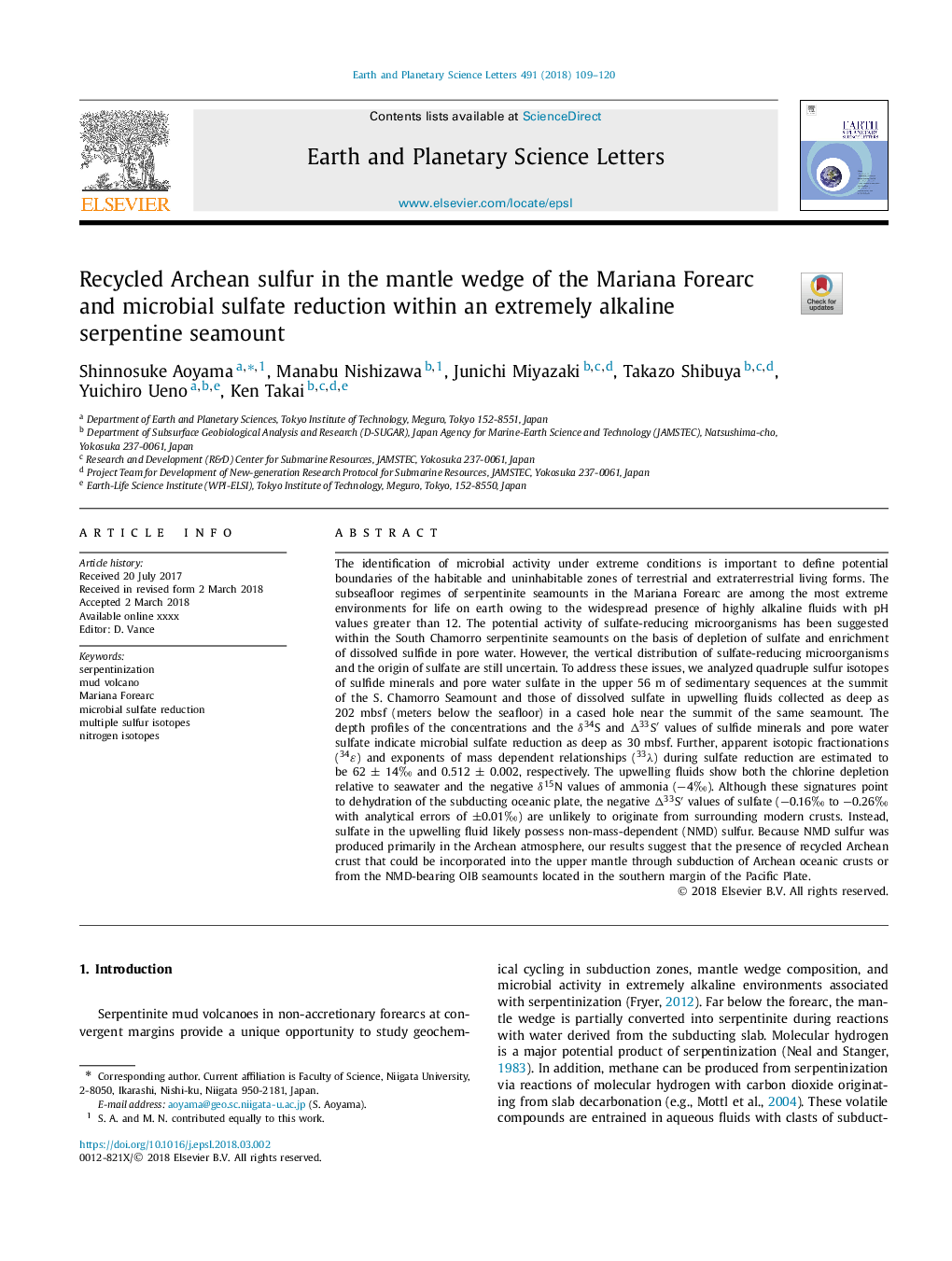| Article ID | Journal | Published Year | Pages | File Type |
|---|---|---|---|---|
| 8906939 | Earth and Planetary Science Letters | 2018 | 12 Pages |
Abstract
The identification of microbial activity under extreme conditions is important to define potential boundaries of the habitable and uninhabitable zones of terrestrial and extraterrestrial living forms. The subseafloor regimes of serpentinite seamounts in the Mariana Forearc are among the most extreme environments for life on earth owing to the widespread presence of highly alkaline fluids with pH values greater than 12. The potential activity of sulfate-reducing microorganisms has been suggested within the South Chamorro serpentinite seamounts on the basis of depletion of sulfate and enrichment of dissolved sulfide in pore water. However, the vertical distribution of sulfate-reducing microorganisms and the origin of sulfate are still uncertain. To address these issues, we analyzed quadruple sulfur isotopes of sulfide minerals and pore water sulfate in the upper 56 m of sedimentary sequences at the summit of the S. Chamorro Seamount and those of dissolved sulfate in upwelling fluids collected as deep as 202 mbsf (meters below the seafloor) in a cased hole near the summit of the same seamount. The depth profiles of the concentrations and the δ34S and Î33Sâ² values of sulfide minerals and pore water sulfate indicate microbial sulfate reduction as deep as 30 mbsf. Further, apparent isotopic fractionations (ε34) and exponents of mass dependent relationships (λ33) during sulfate reduction are estimated to be 62 ± 14â° and 0.512 ± 0.002, respectively. The upwelling fluids show both the chlorine depletion relative to seawater and the negative δ15N values of ammonia (â4â°). Although these signatures point to dehydration of the subducting oceanic plate, the negative Î33Sâ² values of sulfate (â0.16â° to â0.26â° with analytical errors of ±0.01â°) are unlikely to originate from surrounding modern crusts. Instead, sulfate in the upwelling fluid likely possess non-mass-dependent (NMD) sulfur. Because NMD sulfur was produced primarily in the Archean atmosphere, our results suggest that the presence of recycled Archean crust that could be incorporated into the upper mantle through subduction of Archean oceanic crusts or from the NMD-bearing OIB seamounts located in the southern margin of the Pacific Plate.
Keywords
Related Topics
Physical Sciences and Engineering
Earth and Planetary Sciences
Earth and Planetary Sciences (General)
Authors
Shinnosuke Aoyama, Manabu Nishizawa, Junichi Miyazaki, Takazo Shibuya, Yuichiro Ueno, Ken Takai,
